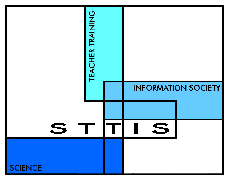Workshop 1
 Contents Contents
|
Section
B Learning about the innovation
Activity
B5 Iteration (cont.) |
|
Force and motion
Model
5a.1
This is an iterative model,
which shows the behaviour
of an object falling in air. When falling, the object is subject to two
forces – the weight of the object acting downwards and the air
resistance
acting upwards. The air resistance is proportional to the square of the
velocity. When the air resistance is equal to the weight of the object,
then the resultant force is zero, and the velocity of the object
reaches
a constant value.
In the model, the
sequence of calculations is
as follows:
-
velocity is calculated from current
velocity and acceleration
- air
resistance is calculated from
the velocity and the drag factor
-
resultant force is calculated
from air resistance and weight
-
acceleration is calculated from
resultant force and mass
The sequence then
repeats, calculating the velocity
in the next time interval.
In addition to the variables
related to the system
itself (initial velocity, mass, drag factor, acceleration due to
gravity)
you can change the time increment (Dt) which is used in the iteration.
The value of this needs to be chosen appropriately. If it is too small,
then there will be insufficient change in the values in each iteration.
If it is too large, then the calculation may behave erratically.

|

 Teaching with computer models
Teaching with computer models

